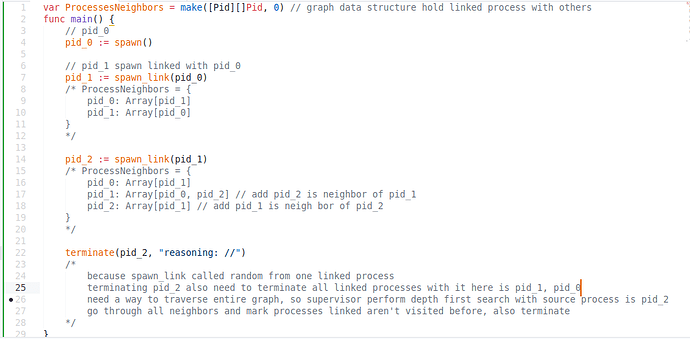I am of the opinion that think processes Erlang are organized in Undirected Graphs.
The reasoning for this is when one process is crashing, then supervisor of Erlang should find all processes are linked with previous one to terminate
Don’t get me wrong about comparing programming languages, I only want to understand how Erlang manages the processes underlying runtime from the perspective of algorithms and data structures.
Thanks for responsing
There are 2 sets of “relationships” between processes:
- links - strong bidirectional bond between two processes, which mean when one process dies the another is notified about it and by default will die as well. Each process can have only one link
- monitors - weak unidirectional bond between processes, where monitoring process will be notified when the monitored process die. One process can have more that one monitor and can be monitored more than once.
Processes itself are just “floating around”, but linking allows us, but doesn’t force us, to create set of process trees (also known as forest). OTP encourages users to make processes always part of the “main” tree, however nothing enforces that. You can easily create process that is not part of the “main” supervision tree of you want - just use “raw” spawn/1.
Thanks
I think this has to be reformulated a bit, as a supervisor links many processes… And a supervisor can have a supervisor linked again, which also has many links.
So something like “each process can only be target of a single link, but create as many as they want”. Though the “target” word somewhat contradicts the “bidirectionality” of the link…























